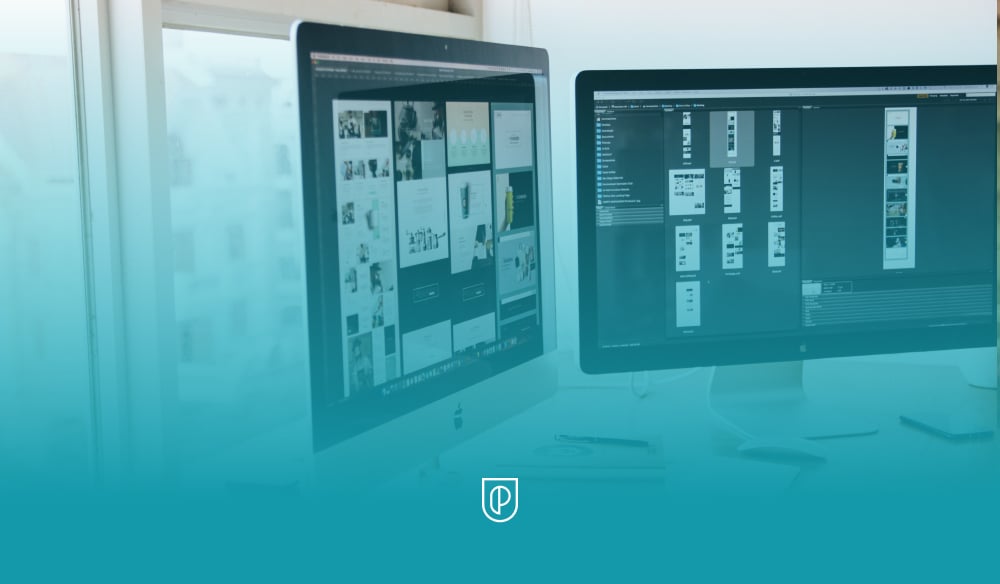Updated: May 6, 2024- 10 min read
In the digital transformation scene, AI product design isn't just a supplementary tool but the heart of product development. Harnessing the power of simulation-driven design and development means a shift in the paradigm of product creation—a leaner, smarter, and more efficient approach that results in enhanced product quality, reduced time to market, and minimized costs.

In this post, you will discover:
The method to harness the power of AI-driven development for improved products.
Insights into bridging the gap between design and real-world functionality.
Strategies for overcoming manufacturing challenges in product development.
An exploration of the 5 transformative stages of AI-driven design.
Approaches to address and overcome key challenges in AI product design.
Techniques for leveraging AI tools to enhance your product design cycle.
Delving into AI product design for manufacturing
As simulation tools have become more sophisticated, they've revolutionized the way we approach product design. Let's explore this transformation in greater detail.
Read more
Learn more about integrating AI-driven processes into your product lifecycle with our AI-Driven Product Design & Development post.
Read more
A bridge between design and reality
Imagine having the power to visualize how a product will behave in the real world even before it’s manufactured. That's what AI product design promises. It's not just about making something look good on screen; it's about ensuring that it functions effectively in its intended environment.
However, there's a catch – ensuring that what glimmers on your screen can also shine in the real world. The challenge? Manufacturability.
A stunning design can falter if not grounded in the practicalities of manufacturing. Those subtle curves, intricate patterns, and fine details might be feasible in a virtual space, but when it comes to the production floor, can they stand the test?
Understanding the challenges of mismatch
The discrepancies between virtual designs and tangible products can sometimes translate into a logistical nightmare. Consider the ramifications of discovering design flaws during a mold trial.

But why let it reach that stage? The choice of materials, the precision of machinery, and the nuances of the manufacturing process can heavily influence the feasibility and efficacy of a design.
This is why without clear direction, it's easy to fall into the pitfalls of guesswork. This can waste resources and potentially lead to over-complicated designs, increasing costs and negatively affecting the final product's performance. And yes, you want to avoid that as much as possible.
Stages of an AI-driven design process
An AI product design approach is essential if you are striving to innovate and elevate your products to excellence. Each stage is a stepping stone towards creating products that are functional but also groundbreaking in design, efficiency, and market appeal.
There are five critical stages that transform a mere idea into a tangible, market-ready product. Let's delve into these stages:
1. Computer-aided design (CAD)
It all starts here. Picture your concept springing to life using robust 3D modeling tools. This phase lays the foundation. It’s more than just creating a design; it's about visualizing the product's future.
2. Computer-aided engineering (CAE) analysis
Once you've laid the foundation with CAD, CAE comes into play, fine-tuning your design through topology optimization. It's a back-and-forth between CAD and CAE, with each step inching you closer to the ideal design.
Learn more about how to innovate in Product
Discover why Product innovation is the cornerstone for success and learn how to make innovation your team's second nature.
Read more
Teams can innovate and create standout products more efficiently, saving both time and money by harnessing these tools.
3. System modelling
Now, let's get everything talking to each other. System modeling is where your design modules interconnect. This is basically the integration stage, ensuring all parts of your design work well.
4. Computer-aided manufacturing (CAM) simulation
Leveraging CAM tools allows you to clearly visualize the manufacturing processes of your product. This includes gaining a comprehensive understanding of the manufacturing costs involved and accurately forecasting production timelines.
In essence, CAM tools enable you to foresee the entire lifecycle of your product from conception to creation.
5. Product development cycle
The journey of iterations and refinements will go on until every metric aligns with your vision. And once you've hit that sweet spot? Prototype.
Test it in the real world. With the insights from your rigorous simulations, transitioning to production becomes a seamless process, promising stellar quality without compromising on costs.
Learn more about AI in Product Lifecycle Management
Discover the future of product innovation and unlock the secrets to revolutionizing the product lifecycle.
Read more
Key challenges of AI product design
Before diving headfirst into AI design integration, you need to be aware of the challenges that might arise in the process:
#1 Understanding the underlying engineering physics
Before employing AI product design tools, ensure that you and your team understand the core engineering principles relevant to your product. This foundational knowledge ensures that simulations are based on accurate physics, leading to dependable results.
#2 Deciphering the simulation method
Each tool utilizes specific methods, be it finite element analysis, computational fluid dynamics, or others. Familiarize yourself with the underlying methods to grasp their advantages, limitations, and appropriate applications.
#3 Mastering the learning curve
Every software has its unique intricacies. As you adopt a new simulation tool, allot time and resources for comprehensive training. This will not only expedite the onboarding process but also minimize errors in the long run.
#4 Streamlining CAD and simulation interplay
Effective AI-driven design relies on smooth collaboration between CAD and simulation tools. Therefore, it's key to know how to effortlessly switch between them.
The power of AI design in product development
Many engineering teams and businesses use AI simulation tools to enhance their design methods. However, some still hesitate to adopt these tools, often due to concerns about high implementation costs, the perceived complexity of the process, or having a workforce that may not be sufficiently equipped or numerous to handle the integration.
Learn more about Digital Transformation
Dive into a streamlined, integrated approach that elevates product creation.
Read more
Some teams might not fully recognize the significant advantages offered by CAE tools, especially when combined with AI. These tools can enhance the design process, as seen in their ability to accurately model and predict the behavior of components.
The level of detail and precision in these models can be adjusted based on the specific requirements of the analysis, offering a tailored approach to design and forecasting.
Real-world successes with AI-driven design
Simulation's profound impact isn't just theoretical; its tangible results can be observed in various sectors. Take the story of Tesla. They employ AI and simulation tools to optimize their vehicle dynamics and powertrains, and even in the development of their self-driving technology. By creating virtual test environments, Tesla can iterate designs faster, predict performance, and ensure safety before a physical prototype is even built.

Another compelling example comes from the aerospace sector. Boeing, the aerospace giant, has leveraged simulation tools in the development of its newest aircraft. This helped them visualize aerodynamics, test structural integrity under various conditions, and optimize fuel efficiency. As a result, their design iterations are quicker, safer, and more efficient, leading to savings in both time and resources.
Moreover, the medical devices industry is no stranger to simulation's benefits. Medtronic, a global leader in medical technology, has tapped into simulation tools to improve the design and safety of its devices, such as heart pacemakers. They've been able to refine designs, ensure patient safety, and reduce time to market by simulating the human body's response to these devices,
Bottom line, all these narratives underscore a crucial truth: enhancing innovation and product performance can be aligned with reducing manufacturing risks, developmental timelines, and expenses.
Harnessing AI tools to elevate the design cycle
Innovation drives product development, and your teams face the significant challenge of developing new and complex products while managing multiple constraints. Balancing a limited budget, navigating shifting regulations, and striving for a product that excels beyond previous versions and rivals is no small feat. The stakes are high.

Let's explore different methods for incorporating AI tools into your product design cycle.
How to incorporate AI tools in the design process?
Bringing simulation to the forefront of your design process can be achieved in two predominant ways:
Empower analysts
One of the most powerful ways to ensure the efficiency and effectiveness of a design cycle is to involve analysts right from the outset. By doing so, you tap into a deep well of knowledge that can inform and shape the design trajectory.
Let’s go back to the Tesla example again, while it was in the conceptual stages of designing its innovative Model 3 Sedan, its team involved analysts in scrutinizing battery efficiency, aerodynamics, and material strengths.
This early collaboration meant that the team could make informed decisions about design aspects, such as the vehicle's unique shape, which contributes to its impressive range and efficiency. Spotting issues early on, they were able to simplify the design process, cut down on revisions, and bring the product to market faster.
Another good example in the consumer electronics sector is Apple's design of the iPhone. It offers yet another proof of the benefits of early analyst involvement. From the device's inception, analysts worked alongside designers to address concerns related to battery life, heat dissipation, and structural integrity. Their early insights were crucial in developing the iPhone's signature slim design while ensuring optimal performance and durability.
2. Equip designers with AI and simulation knowledge
Investing in training your designers to understand AI and simulation can empower them to make informed decisions right from the design phase. When designers have this knowledge, they can identify potential weaknesses or areas for optimization in their designs without relying on a separate team or process.

Boeing is a prime example of leveraging simulation in design as well. To ensure the safety, efficiency, and performance of their aircraft, designers at Boeing use simulation tools to analyze aerodynamics, weight distribution, and fuel efficiency. With a clear understanding of these simulations, designers can preemptively make adjustments to wing shapes, materials used, and internal cabin designs.
This integration of simulation insights means that when a new aircraft model is proposed, it's already optimized for both performance and passenger comfort. The streamlined approach has allowed Boeing to reduce costly physical prototypes and iterate faster on new aircraft designs.
Another noteworthy example is Adidas. In their mission to craft the perfect running shoe, designers at Adidas utilized simulation tools to analyze and predict wear patterns, cushioning effectiveness, and overall foot support.
Because these designers understood the principles of simulation, they could quickly iterate on designs, making minute adjustments to shoe structures based on virtual stress tests and wear simulations. The result? A shoe that not only looks good but also offers peak performance and durability.
In both of these examples, the line between designer and analyst blurred. Arming designers with the tools and knowledge of AI simulation, you can foster a more holistic design approach, ensuring that products are both innovative and feasible right from the drawing board.
The future of product design
AI-driven design is continuously evolving, as new technological advancements keep expanding its capabilities. A notable example is cloud computing, which opens the door to using extensive computational power as needed. This development allows for running more intricate simulations without being limited by the hardware capacities of individual workstations.
On top of it, as mobility becomes an integral part of our work culture, we can anticipate AI design tools adapting to offer more collaborative features, fostering collective problem-solving and design iteration.
Learn more with Product School
Interested in advancing your product career? Our team is ready to guide you on your journey. Schedule a call with our admissions team today to learn how we can help you move forward in your product career.
Schedule a call
In short, integrating AI-driven product design into your product lifecycle will prepare your teams for the complexities of modern product creation as well as empower them to innovate with confidence.
Updated: May 6, 2024




